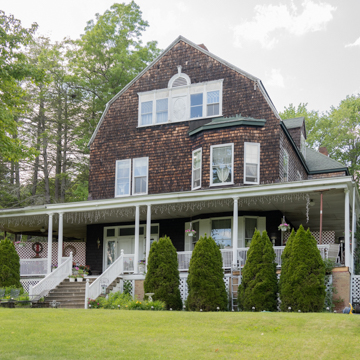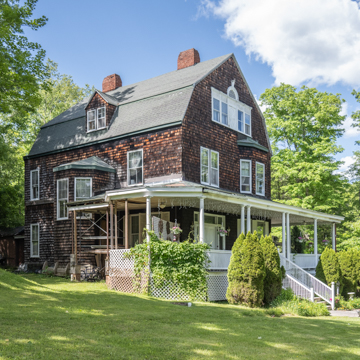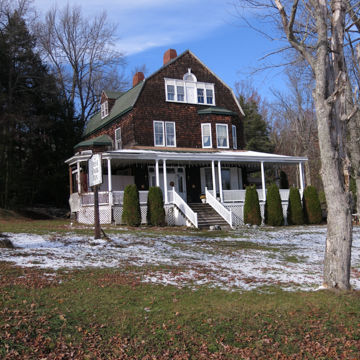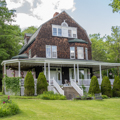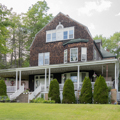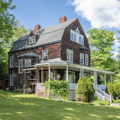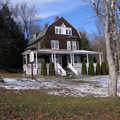In 1873, B&O Railroad president John Garrett opened the Deer Park Hotel designed by E. Francis Baldwin (c. 1942 demolished), drawing seasonal visitors to the area. Deer Park became the first and most exclusive resort in the region. Garrett had been advocating for development of summer resorts along B&O lines in western Maryland since the 1860s, but progress was delayed by the Civil War. The scenic beauty and healthful climate of southern Garrett County attracted visitors from Baltimore and such other major cities as Washington and Philadelphia. Deer Park especially drew many dignitaries during its late-nineteenth-century heyday, including President Grover Cleveland, who honeymooned in cottage number 2 in 1886.
While the hotel, railroad station, and resort amenities such as tennis courts and a golf course are no longer extant, a handful of cottages in popular Queen Anne or Shingle Style modes remain along a curving drive and speak to Deer Park’s history. Nineteenth-century resort hotel proprietors commonly sold lots for construction of personal cottages, but surviving examples of this pattern are rare.
One of the most impressive survivors is Pennington Cottage, designed by and for architect Josias Pennington. Along with senior partner Baldwin, Pennington’s firm designed many buildings for the B&O Railroad, including the hotel and cottages at Deer Park. Pennington Cottage stands three stories on a raised stone foundation, with a tall gambrel roof, wraparound porch, and shingled siding. The surviving Deer Park cottages, while designed for summer leisure, convey the formal lifestyle and status of their late-nineteenth-century residents with their impressive scale, elevated siting, and fashionable ornament. The local springs supplied the pools at the hotel and also drinking water for B&O passengers; later acquisition of this operation led to use of the Deer Park town name as a bottled water brand.



